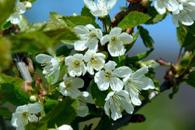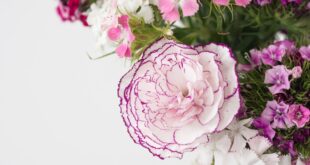By Dexter Bedd
 Gabriel Garcia Marquez utilized the symbolism of the orange blossom in his novel, Chronicle of a Death Foretold, to magnify Angela Vicario's lie and indecency. Angela Vicario, who was to marry the wealthy and mysterious Bayardo San Roman, dared to lay with a man before she was married and therefore shamelessly wore the orange blossoms on her gown. In the small Columbian town where the story takes place a woman's honor: her purity, innocence, and most importantly her chastity were held to the highest respects.
Gabriel Garcia Marquez utilized the symbolism of the orange blossom in his novel, Chronicle of a Death Foretold, to magnify Angela Vicario's lie and indecency. Angela Vicario, who was to marry the wealthy and mysterious Bayardo San Roman, dared to lay with a man before she was married and therefore shamelessly wore the orange blossoms on her gown. In the small Columbian town where the story takes place a woman's honor: her purity, innocence, and most importantly her chastity were held to the highest respects.
The orange blossom has stood for purity, chastity, and innocence dating back to ancient China. In China an emblem of the orange blossom was placed on the gowns of young brides to represent these virtues. This tradition moved westward into India and up to Persia which is present day Iran. After many difficult years of fighting in the crusades many European soldiers brought back with them this flower and its meaning to their young blushing brides to be. Europe was introduced to the sweetly fragranced flower and the idea of decorating a bride with its beauty and meaning.
The custom was first brought into Spain and then moved to France and England. The Spanish of course took their newly found custom to the new world with them and all of their colonies therefore were recipients of respect for this flower. Citrus sinensis, the scientific name for the orange blossom also became a symbol of fertility in the Victorian era. The orange blossom took on this new meaning, because it blooms along side oranges. Being that the tree produces both fruit and flower caused people to consider it to be very fertile.
Queen Victoria herself wore a wreath of orange blossoms on her wedding day. Doing such increased the demand for the flower tenfold. Everyone dutifully followed the example of Queen Victoria and used orange blossoms to accent their weddings. Unfortunately orange blossoms were incredibly expensive. Sometimes orange blossoms were in short supply and could not meet the demands of the number of people that wanted them.
In the north it was very difficult to get orange blossoms, because orange blossoms can only grow in warmer climates like in the south. Since not everyone could afford these fresh flowers that were in such high demand, therefore expensive, they had to resort to alternative options. Wax versions of the orange blossom became the alternative to the incredibly expensive fresh orange blossom.
Women wore them in wreaths and other sorts of head garments. Orange blossoms were also placed along side roses in bouquet. The delicate white flower seemed to be complimentary with all other sorts of flowers. Outside of headdress and flower arrangements some women would actually pin orange blossoms to their gowns.
It is truly astounding how such a small flower could come to take on such big meanings. The orange blossom was given the task to remain forever innocent, pure and chaste. It cannot be like its cousin the rose a red hot lover the flowery symbol for passion and love. The ancient Chinese in all their wisdom selected it to be the everlasting symbol for purity and with its delicate petals and sweet smell the orange blossom holds true to that original idea.










Join the Discussion
Type out your comment here:
You must be logged in to post a comment.